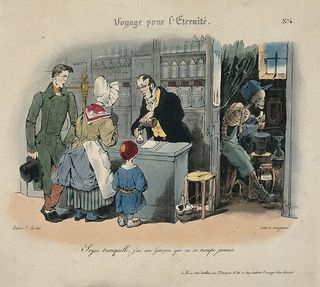Education
Suspicious Behaviors Suggest Misuse of Opioids
Is anyone you know misusing opioids?
Posted April 28, 2018
From the Centers for Disease Control and Prevention, we know that there is no benefit whatsoever to taking opioids for chronic, non-cancer pain, and there are many harmful effects to the patients (and others) who take them. Yet physicians still prescribe opioids — in plentiful amounts. Here’s another downside. Many of these prescriptions are not used as prescribed — or even used by the recipient of the prescription. Han and colleagues report that 11 million people in the U.S. use opioids for non-prescribed purposes, such as for recreation (getting “high”), to satisfy an addiction, to self-treat one’s pain, to give to someone else, or even to sell.
How might you spot someone misusing opioids, such as Oxycontin or Vicodin or Narco? Here are some behaviors patients exhibit that suggest misuse — using opioids for a non-prescribed purpose.
- Consulting physicians from multiple practices for prescriptions
- Calling their physician’s office to be seen without an appointment — “The pain is much worse”
- Frequently calling the physician’s office for early refills — “I needed to take some extra ones when my grandkids came”
- Requesting an extra prescription, reporting the first one was lost or stolen — “I don’t know what happened; when my teenager and I got home, I put them in the medicine cabinet”
- Frequent emergency room visits for prescriptions
- Refusal to reduce or discontinue medication when there is no pain relief
- Refusal to participate in other methods to control pain — “The patch is the only thing that works”
- Increasing the dose without approval — “It was the worst headache I ever had”
- Using the drug for non-pain symptoms, such as insomnia or anxiety — “I have so much trouble sleeping”
- Drinking alcohol for pain — “It’s the only thing that works when it’s bad”
- Missing appointments because of pain — “I was so sick, I couldn’t make it”
- Hoarding opioids
I have seen every one of these patterns, most of them many times. This comes with a caveat, however, if you know anyone with some of these behavioral patterns. We may see these behaviors in those who are not misusing. As well, we don’t always see these behaviors in those who misuse. That means these behaviors are not diagnostic — just reasons for suspicion. Indeed, misuse is not related to pain severity, stature in the community, skin color, employment status, education, or a host of other considerations. Don’t prejudge. The banker, the coach, the housewife, or the grocer may misuse prescription opioids as much as anyone else.

Nevertheless, these behaviors come into play when the physician must decide which patients should, for example, receive pharmacy screens to be sure they pick up the prescription written, and that there are no other prescribers; or the physician may order urine drug testing to determine the presence or absence of both prescribed and non-prescribed drugs the patient is taking. But these tests are far from perfect.
The only way to cure the prescription drug misuse problem is to train clinicians in their use — or more accurately, their non-use. Right now, we’re in a sorry state. The Centers for Disease Control and Prevention tells us that in 2013, these untrained physicians wrote nearly 250,000,000 prescriptions for opioids. That’s enough for nearly every adult in the U.S. to have received one bottle (30-90 tablets in each) — even though they have no value in chronic pain, are dangerous, and are widely misused!
Medicine and medical education have faltered badly. For the greater than $3 trillion (that’s with a "t") spent yearly on health care, you deserve better. And our medical leaders are doing next to nothing about it. Until they make major curricular changes in medical school and residency training, there will be little change.


